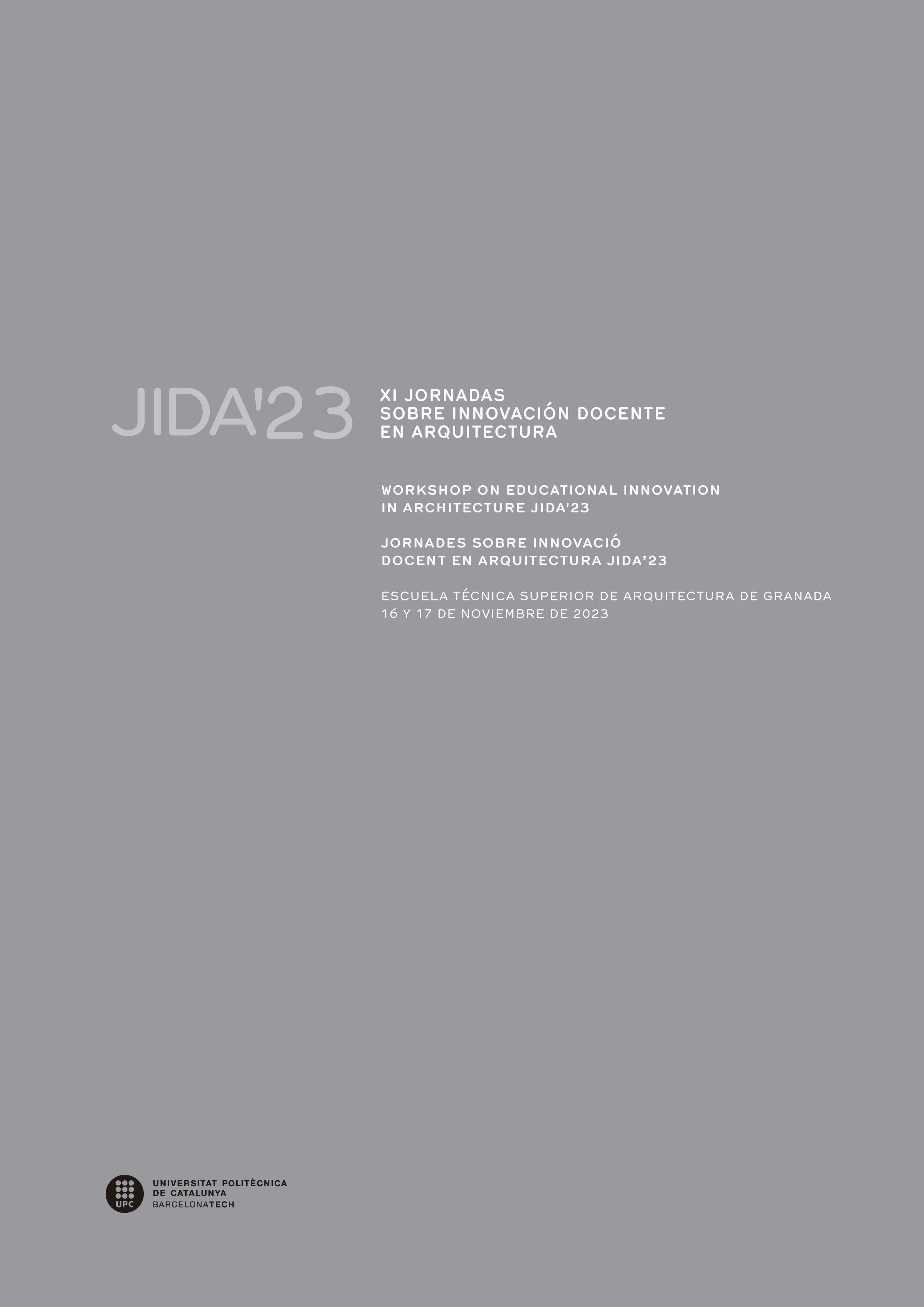Comparing, discussing, designing
DOI:
https://doi.org/10.5821/jida.2023.12230Keywords:
architecture, comparison, criticism, designing tools, writingAbstract
The subject 'Comparative Architecture', framed within a Master's program at UPC (Polytechnic University of Catalonia), proposes the comparison of a series of pairs of images as a learning methodology. Over the course of one semester, students create a set of texts in which they bring out the multiple relationships established between two architectural or artistic works. This sharpens their observation skills, develops critical thinking, and equips them with new project tools. This article presents the background of the comparative method, elaborates on the ideological and methodological foundations of the course, explains the dynamics of the sessions, and showcases the results of the subject. Through this course, students acquire the ability to describe in words the visible certainties or invisible threads that connect two works of diverse origins, conditions, and characteristics, in a didactic approach that allows them to engage with architecture in a different way.
References
Argan, Giulio Carlo. 1983. Walter Gropius y la Bauhaus. Barcelona: Gustavo Gili.
Benjamin, Walter. 1989. «La obra de arte en la época de su reproductibilidad técnica». En Discursos interrumpidos I. Buenos Aires: Taurus. Original en alemán: «Das Kunstwerk im Zeitalter seiner technischen Reproduzierbarkeit». Zeitschrift für Sozialforschung. 1936.
Berger, John. 2000. Modos de ver. Barcelona: Gustavo Gili.
Collier, David. 1993. «The Comparative Method». En Political Science: The State of the Discipline II. Finifter, A. (ed.). Washington DC: American Political Science Association.
Cook, Theodore. 1979. The curves of life. London: Dover Publication. Original. 1914. Londres.
Cortés, Juan Antonio. 2006. Lecciones de equilibrio. Madrid: Fundación Caja de Arquitectos.
Cortés, Juan Antonio. 2015. «Colin Rowe y algunos instrumentos de análisis arquitectónico. El método comparado, los “elementos constituyentes” y el “factor desencadenante”». En Otra historia. Estudios sobre arquitectura y urbanismo en honor de Carlos Sambricio, editado por Juan Calatrava et al. Madrid: Lampreave.
Didi-Huberman, Georges. 2010. Atlas. Entrevista a George Didi-Huberman: https://www.museoreinasofia.es/multimedia/atlas-entrevista-georges-didi-huberman
Didi-Huberman, Georges. 2011. Ante el tiempo. Buenos Aires: Adriana Hidalgo ed.
Frampton, Kenneth. 2015. A Genealogy of Modern Architecture: Comparative Critical Analysis of Built Form. Zurich: Lars Müller publishers.
Giedion, Sigfried. 2009. Espacio, tiempo y arquitectura. Barcelona: Reverte. Original en inglés: Space, time and architecture. 1941. Cambridge, Massachussets: Harvard University Press
Malraux, André. 1952. Le musée imaginaire de la Sculpture mondiale. París: NRF, la Galerie de la Pléiade.
Noriega, Simón. 2006. «Heinrich Wölfflin y la pura visualidad». Presente y pasado. Revista de Historia. Año 11, nº 21. Enero-Junio.
Rasmussen, Steen Eiler. 1974. La experiencia de la arquitectura. Barcelona: Labor.
Rowe, Colin. 1999. «Las matemáticas de la vivienda ideal». En Manierismo y arquitectura moderna y otros ensayos. Barcelona: Gustavo Gili.
Sennett, Richard. 2009. El Artesano. Barcelona: Anagrama
Scully, Vincent. 1999. «Introducción». En Complejidad y Contradicción en Arquitectura. Barcelona: Gustavo Gili.
Tatarkiewicz, Wladislaw. 1990. Historia de seis ideas. Madrid: Tecnos Alianza.
Thomson, D’Arcy. 2003. Sobre el crecimiento y la forma. Cambridge University Press. Madrid. Original en inglés: On Grown and Form. 1917
Van De Ven, Cornelius. 1976. El espacio en arquitectura. Madrid: Cátedra
Venturi, Robert. 1999. Complejidad y Contradicción en Arquitectura. Barcelona: Gustavo Gili.
Warburg, Aby. 2010. Atlas Mnemosyne. Madrid: Akal.
Wölfflin, Heinrich. 1977. Renacimiento y Barroco. Madrid: Alberto Corazón. Original en alemán. 1888. Munich: T. Ackermann.
Zevi, Bruno. 1999. Leer, escribir, hablar arquitectura. Barcelona: Ediciones Apóstrofe.






















